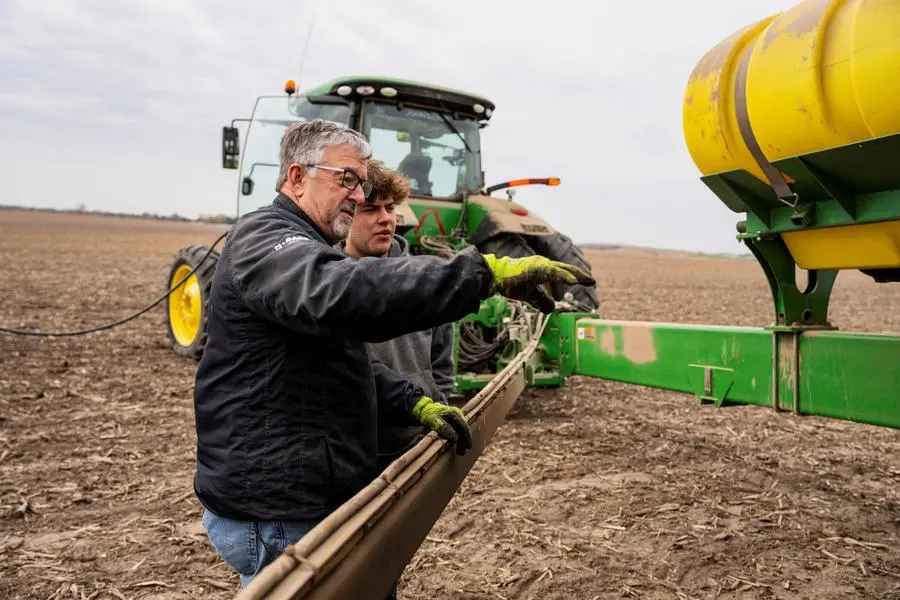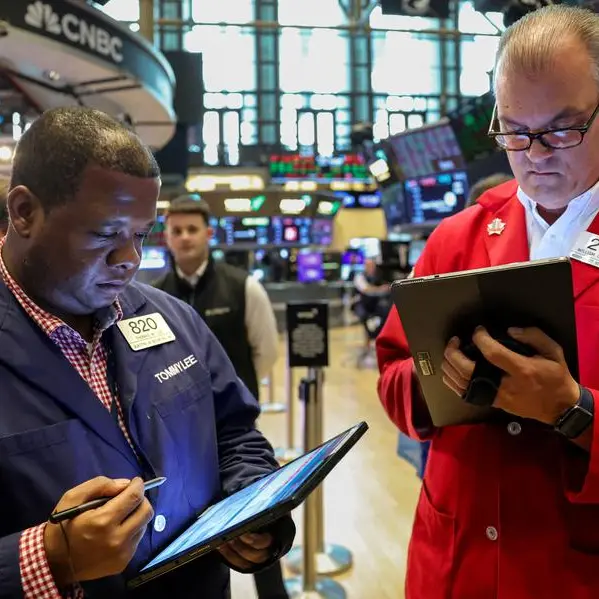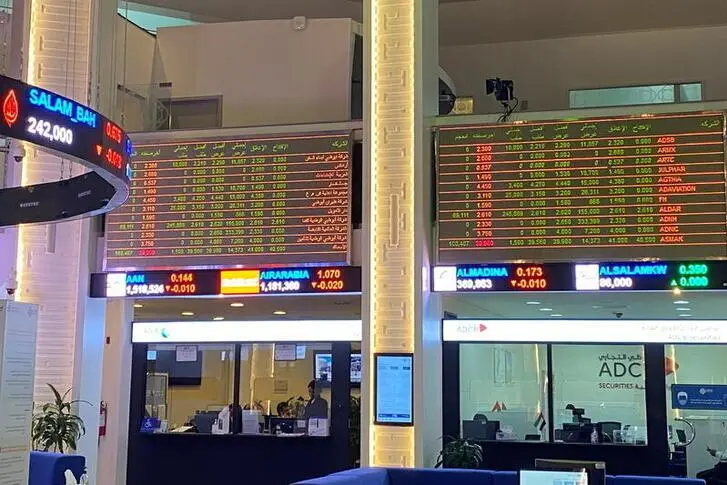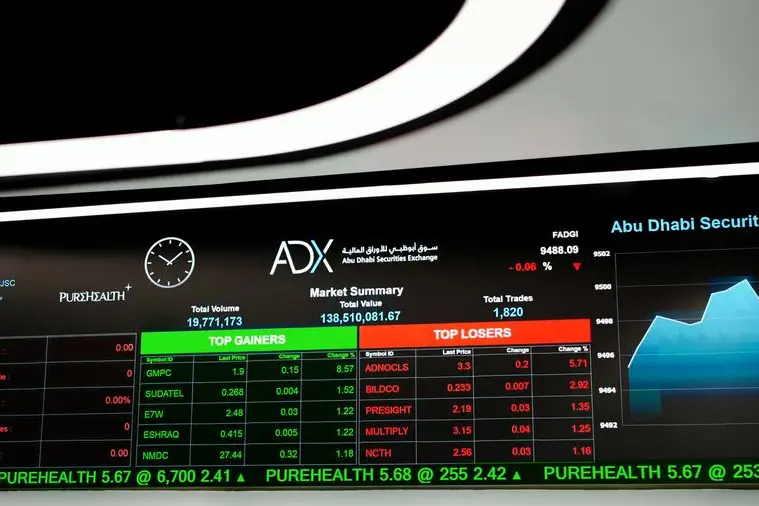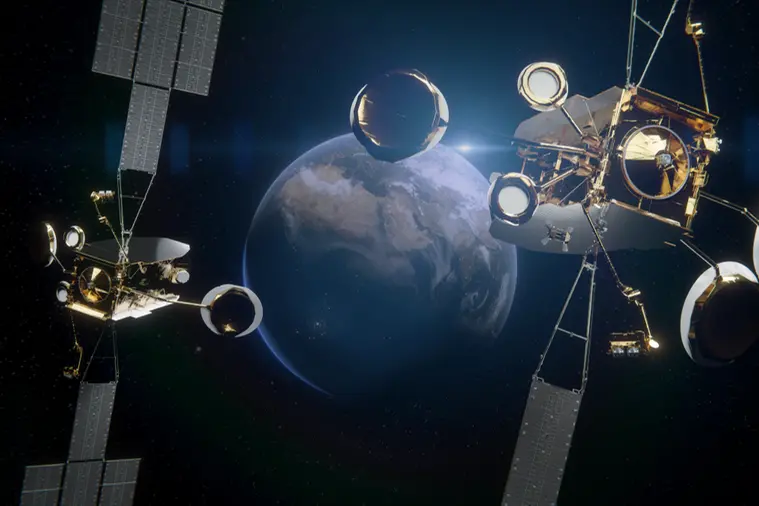PHOTO
Steve Pitstick talks to his co-worker Mikey before sowing corn seeds at his farm in Elburn, Illinois, U.S. April 17, 2025. REUTERS/Vincent Alban.
(The opinions expressed here are those of the author, a market analyst for Reuters.)
NAPERVILLE, Illinois - U.S. farmers have hit very few snags with corn planting this spring, and the foreseeable future is barrier-free.
Dry and mostly warm weather across the Corn Belt through mid-month should be favorable for farmers in the world’s largest exporter to get the grain in the ground.
Whenever U.S. corn planting moves at an average or above-average clip, analysts often start considering two things.
First, they ponder if this might further enhance the potential increase in planted corn acres between the government’s March and June surveys.
Second, they weigh whether efficient planting could limit yield losses from poor weather. The idea is that corn would undergo its critical pollination period before the hottest part of the summer.
U.S. Department of Agriculture data shows U.S. corn planting was 40% completed as of Sunday, just ahead of the five-year average of 39%. However, that gap could widen through mid-month given the supportive weather forecast.
But what might this progress mean for acres and yields?
ACRES
USDA’s March survey showed that U.S. farmers would plant 95.3 million acres of corn in 2025, a 12-year high. Some analysts at the time feared a much larger number, though now that scenario seems to be a real possibility for the June survey.
But does the timely planting mean that the acreage increase could be even greater? The short answer is no, not by itself.
For one, U.S. corn acres almost always increase between the March and June surveys. That was the case in 15 of the last 20 years.
Ironically, of the five years when corn acres declined from March to June, three had featured very fast paces of planting in early May.
Slow planting certainly limits March-June acreage gains, but large jumps have occurred under both average and fast early May planting scenarios. And the largest jumps were not more likely to occur with an increasingly faster planting pace.
Examining the specific years associated with big corn acreage gains between March and June (including 2007, 2009, 2021, 2023, 2024) may imply that the move was more market-driven.
YIELDS
Data suggests that faster early corn planting does not have a distinct bearing on yield outcomes.
For example, there were 12 years within the last three decades in which corn planting was at least 50% complete as of May 4, well above current and average levels for purpose of demonstration.
Final corn yield was more than 1% below USDA’s starting trend yield in five of those years, and yield was above trend by 1% or more in four of them. The 2012 drought was a notable season where fast planting preceded terrible yields, opposite the common notion.
Slow planting seemingly has a much larger influence over yields. Of the five years that featured the lowest planting paces by early May, yields were discernably below trend in four of them and just average in the fifth.
WHAT IS AVERAGE?
In recent years, corn has been planted slightly later on average than over the longer term, and soybeans are probably to blame.
As of Sunday, farmers had planted 30% of their intended soybean area, a record-large portion for the date. The relatively low acreage that they are targeting likely helps in this feat.
But the record pace might be more reflective of a new normal rather than a genuinely speedy effort.
I posted a poll on X for U.S. farmers on Monday asking whether they are planting their beans earlier than they were five-to-seven years ago, particularly as it pertains to planting beans before corn.
Of nearly 400 farmer respondents by late afternoon on Monday, some 49% said they have shifted bean planting earlier to a large degree on their farm. About 19% said there was no significant change and 32% said the shift was somewhat mild.
Many U.S. producers have said in recent years that earlier bean planting is linked with stronger yield potential. A major reason is that the plants can enjoy more sunlight – a key component to big bean yields – before day length peaks around June 21.
While this phenomenon could continue to push back average corn planting dates over the coming years, this is likely to be irrelevant for this year, especially if fieldwork-favoring weather continues through the end of the month.
Karen Braun is a market analyst for Reuters. Views expressed above are her own.
(Writing by Karen Braun Editing by Matthew Lewis)
Reuters
